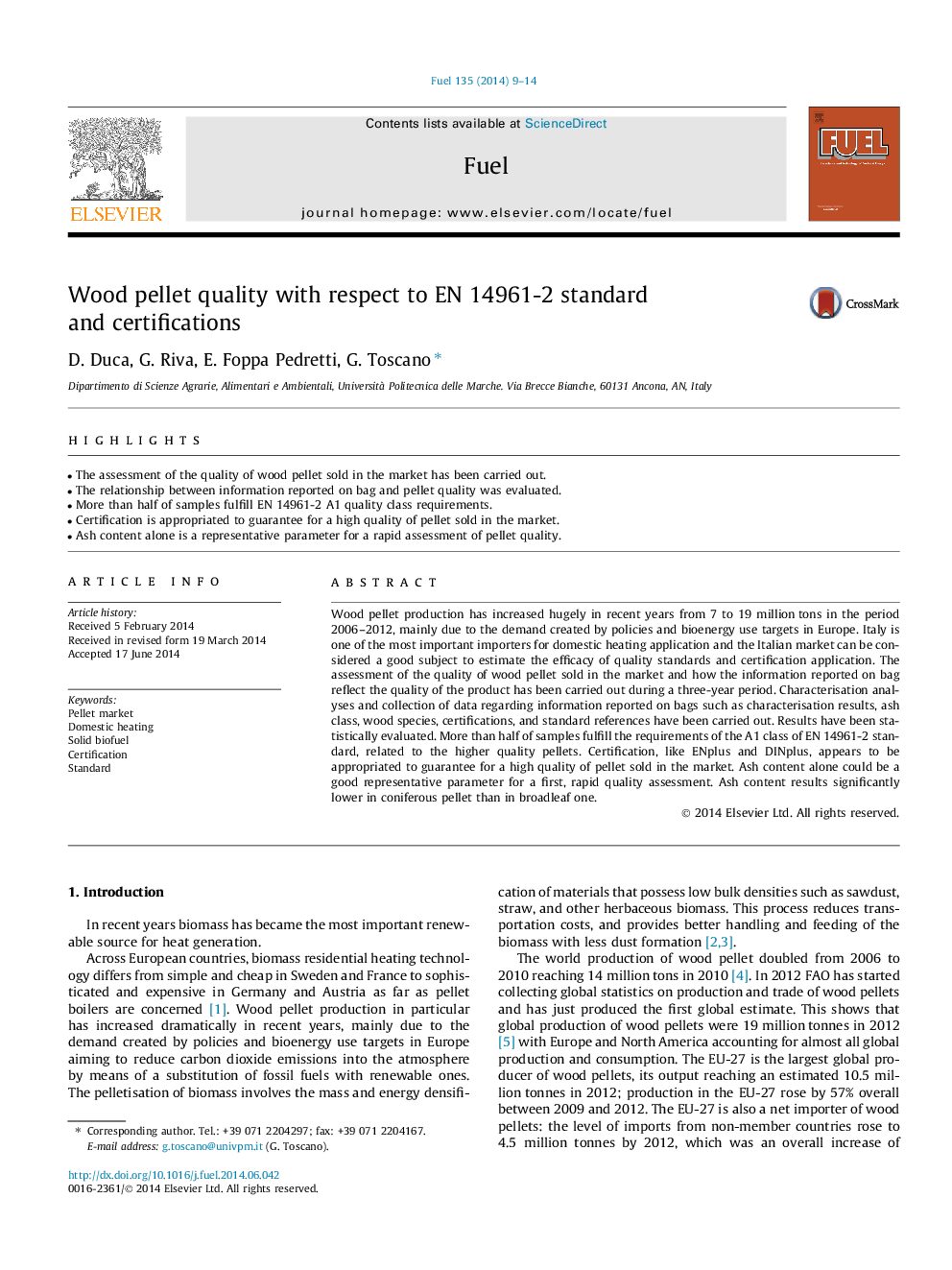| Article ID | Journal | Published Year | Pages | File Type |
|---|---|---|---|---|
| 6636647 | Fuel | 2014 | 6 Pages |
Abstract
Wood pellet production has increased hugely in recent years from 7 to 19 million tons in the period 2006-2012, mainly due to the demand created by policies and bioenergy use targets in Europe. Italy is one of the most important importers for domestic heating application and the Italian market can be considered a good subject to estimate the efficacy of quality standards and certification application. The assessment of the quality of wood pellet sold in the market and how the information reported on bag reflect the quality of the product has been carried out during a three-year period. Characterisation analyses and collection of data regarding information reported on bags such as characterisation results, ash class, wood species, certifications, and standard references have been carried out. Results have been statistically evaluated. More than half of samples fulfill the requirements of the A1 class of EN 14961-2 standard, related to the higher quality pellets. Certification, like ENplus and DINplus, appears to be appropriated to guarantee for a high quality of pellet sold in the market. Ash content alone could be a good representative parameter for a first, rapid quality assessment. Ash content results significantly lower in coniferous pellet than in broadleaf one.
Related Topics
Physical Sciences and Engineering
Chemical Engineering
Chemical Engineering (General)
Authors
D. Duca, G. Riva, E. Foppa Pedretti, G. Toscano,
